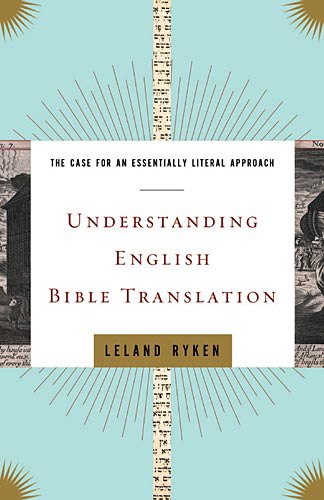
Leland Ryken
Reviewed by: David C. Noe
Understanding English Bible Translation: The Case for an Essentially Literal Approach, by Leland Ryken. Published by Crossway Books, 2009. Paperback, 208 pages, list price $12.99. Reviewed by OP elder David C. Noe, who teaches classical languages at Calvin College.
Leland Ryken's Understanding English Bible Translation is an excellent introduction to the contentious world of competing Bible versions. It covers a broad variety of topics that should be considered when selecting a Bible translation. Ryken, who has taught English at Wheaton College for over forty years, argues for "an essentially literal approach."
Ryken is more successful in pointing out the many weaknesses in dynamic equivalent (DE) translations (like the NIV and The Message) than in making his case for the essentially literal approach. When cataloguing the many difficulties of the DE approach, Ryken pulls no punches. For example, he states that "in their actual practices, dynamic equivalent translators show that they think they can do a better job of communicating God's message than the original authors did" (p. 31). Ryken shows the many deficiencies of DE translations and explains the attitudes and (to him) noxious interpretive philosophies that underlie their choices of words and phraseology. Yet despite his vehement opposition to the DE camp, Ryken acknowledges that the goals of "gospel witness" and "clarity of expression" are shared by all translators (p. 71).
When making the case for his own view, Ryken is not as persuasive. Part of the problem is defining "essentially literal." Although Ryken does define his terms, the picture he paints emerges slowly, with the clearest functional definition not coming until page 97: "Essentially literal translators … refuse to add anything to a translator's job description beyond the task of translating, defined as finding the English words that most accurately correspond to the words of the original." Had Ryken stated this earlier, his case would have been much stronger. Ryken does make a careful and nuanced argument for the essentially literal approach, acknowledging that there is a continuum of fidelity to the original text among DE translations.
Ryken praises the KJV with constant warmth. For example: "Despite all contemporary attempts to debunk the King James Version, it is the supreme English translation of the Bible" (p. 47). If a reader does not have a due respect for the beauty and longevity the KJV, he will after reading Ryken, as much of the book is in effect an encomium of that translation.
Ryken is at his best when explaining how the guiding principle of much contemporary Bible translation is that the Scriptures are to be read and studied by oneself. Ryken expertly critiques this view as opposed to our vibrant Protestant heritage of expository preaching and corporate recitation of God's Word. Ministers and ruling elders will especially benefit from Ryken's argument that the quality and reliability of a translation can positively and negatively impact the life of a congregation.
In conclusion, although Ryken's argument is slow to develop and in places unclear, in my estimation it is sound and well worth considering by officers and members of the OPC.
November 23, 2025
November 16, 2025
November 09, 2025
November 02, 2025
October 26, 2025
October 19, 2025
October 05, 2025
Raising Sexually Faithful Kids and
Parenting Boys and Girls in a Gender-Confused World
© 2025 The Orthodox Presbyterian Church